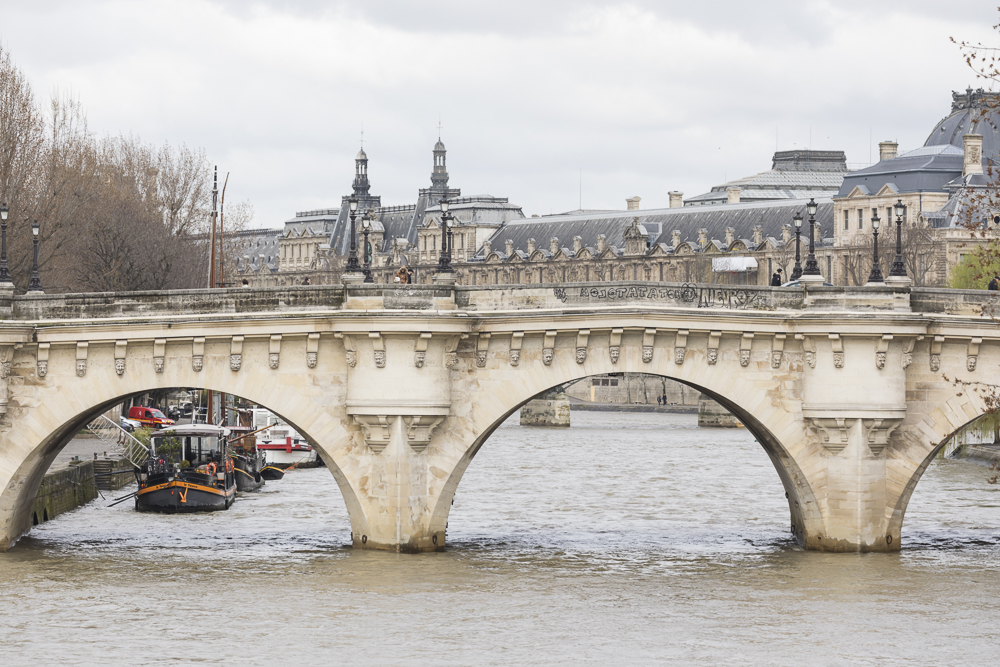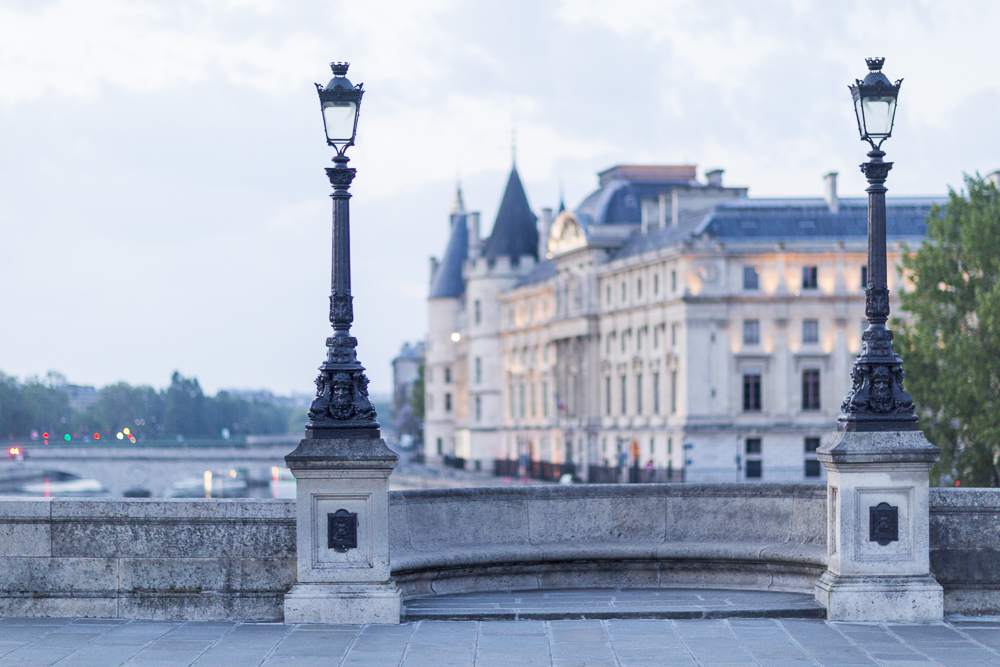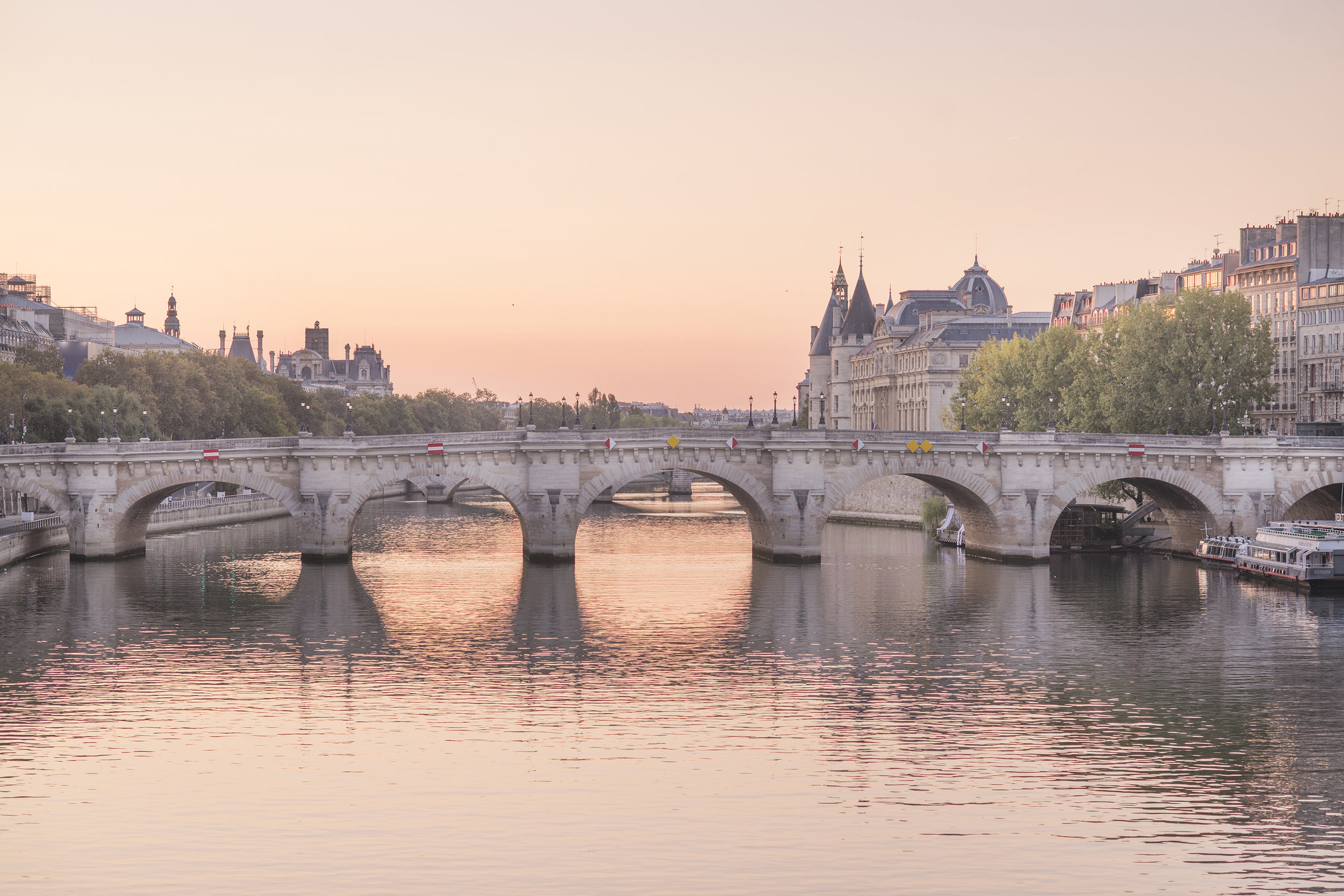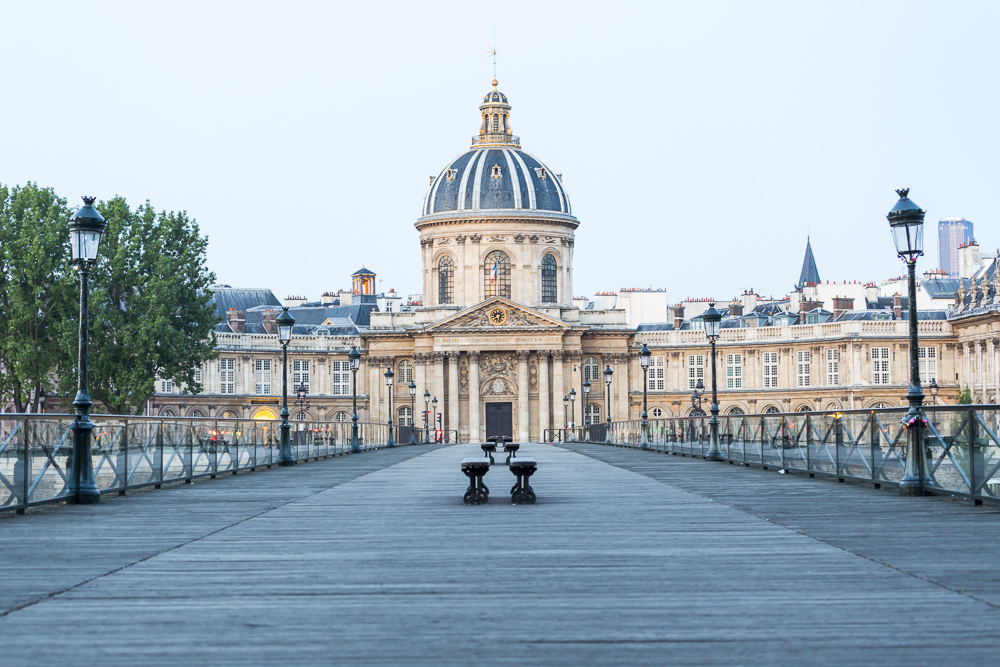Did you know that in central Paris there are over 30 bridges across the Seine? There are 13 just connecting the Île de la Cité and Île Saint-Louis with each other and the two banks of the river.
When you are first finding your way around Paris, this can be somewhat bewildering, and you may well miss some of the details of these bridges.
Yet many of the bridges that cross the Seine are masterpieces of architecture and design, quite beautiful in themselves, each unique, each loaded with history.
We’ve chosen 4 of our favorites to show you in more detail, but please don’t think that these are all the Paris bridges there are. No doubt if you know Paris you also have your favorites.
After you’ve read the post you may well be asking, “What about the Pont au Double? Where is the Pont Marie? How about the Pont Saint-Michel? The Pont au Change, Royal, etc. etc.?” Well, please do leave us a comment. Tell us what your favorite bridges are. And there is plenty of room for follow-up posts covering some of the others. But here are 4 bridges that are special to us.
Pont Alexandre III
For many people, Pont Alexandre III is their favorite bridge in the whole world. It’s definitely in a league with the Charles Bridge in Prague, Tower Bridge in London, the Ponte Vecchio in Florence and other world famous bridges.
The bridge was built in 1900 for the World Fair in Paris (by comparison, the Eiffel Tower was finished just over ten years earlier for the 1889 World Fair).
It is a beautiful artistic achievement with many sculptures, columns, ornate lamp posts and details built on a carefully engineered structure, designed to be low profile so as not to interrupt views of the Invalides and Eiffel Tower while at the same time being very navigable (hence the wide span).
Pont Neuf
Pont Neuf (New Bridge) connects the western end of the Île de la Cité to both banks of the Seine. It’s really two bridges or at least in two distinct sections. Despite its name. the Pont Neuf is the oldest bridge across the Seine in Paris still standing.
A notable feature of the bridge are the 381 mascarons (no, not macarons, mascarons :-) or stone masks which line either side, representing the heads of forest and field divinities from ancient mythology. The current masks are copies of the originals.
It’s interesting to know that centuries ago the Île de la Cité ended at the bridge which grazed the western, downstream end of the island. For a number of reasons the island has grown downstream and now the whole Square du Vert-Galant and the statue of Henry IV are downstream from the bridge.
One of our favorite features is the lamp posts on both sides. Beautiful in themselves, they are placed perfectly for framing photos looking up and down the river.



Pont Notre-Dame
You can easily recognize Pont Notre-Dame when you look up or down the river because of the green metal structure. This is the second oldest bridge in Paris and its predecessors date back to pre-Roman days when Paris, then Lutitia, was based on Île de la Cité. The current incarnation of the Pont Notre-Dame was opened in 1919. The bridge with the large “N” seen beyond the Pont Notre-Dame is the Pont au Change. Its counterpart on the other side of the island is the Pont Saint-Michel which also has the same “N” (this by way of orientation – it’s easy to get confused). In case you wondered, the “N” was the imperial symbol of Napoleon III.
The details of Pont Notre-Dame, are wonderful to explore, but in particular it has beautiful, floral wrought iron railings on either side.
Pont des Arts
The Pont des Arts is also easy to distinguish due to its minimalist metal construction consisting of seven arches supported on stone pillars. It is a pedestrian bridge with benches along its length, connecting the Institut de France on the left bank with the Palais du Louvre on the right bank.
The current bridge was completed in 1984, replacing its predecessor which had been damaged by bombs in WWII and subsequent boat accidents. In the second decade of this century tourists took to attaching lovelocks to the bridge as proof of the fact that they had been in Paris and in love. They did this to such an extent and in such profusion that over a million locks totaling some 45 tons had to be removed and the railings replaced with glass panels so that this romantic vandalism would cease. Today’s bridge is virtually lovelock free, much to the relief of Parisians and the authorities and tourists who just want to enjoy the bridge.


An “aerial” view of Paris, the Seine and some of the beautiful bridges that span it.
We hope that this short introduction to some of Paris’s most interesting and beautiful bridges has aroused your curiosity and that you will do some exploring, either in person on location or virtually on maps and websites. There’s a downloadable map showing all the bridges here which will help you place them all and you can explore on your favorite maps program. They all have a history and each is unique in character and appearance.
You will find prints and canvases of many of the above images, and other Paris bridges in our shop. The clue is that if you can click on one of the above images, it will take you to the listing. If you would like a print or canvas of any images that are not listed in our shop, please contact us.
Don’t forget to leave a comment and to share this blog post with anyone you think might be interested.
À bientôt!








